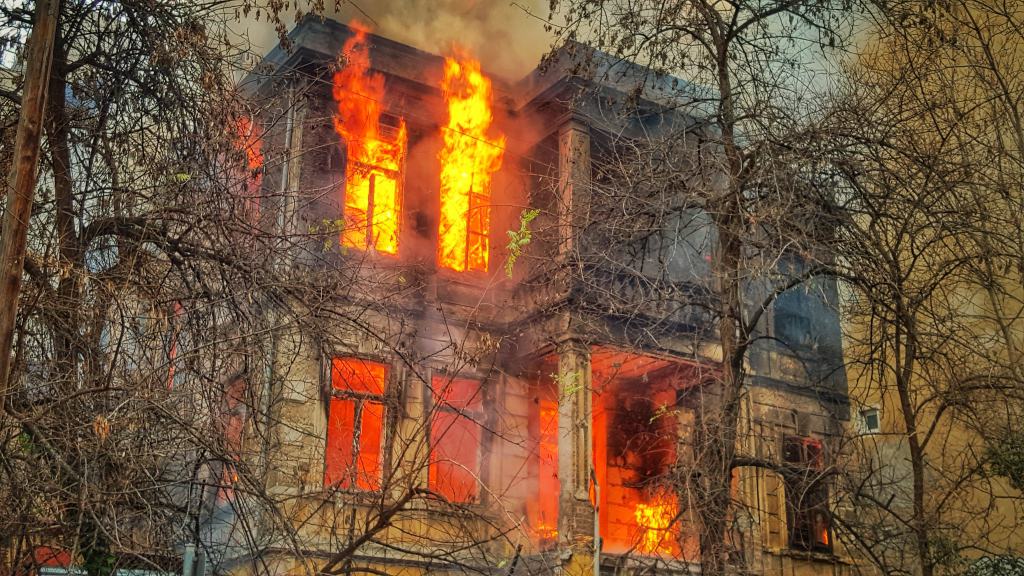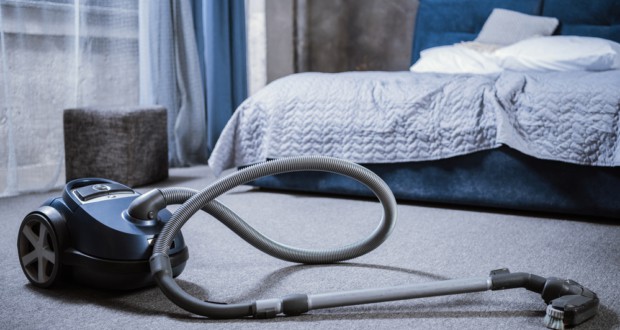A house fire is nothing short of devastating. Regardless of its scale, such an event can destroy many parts of your house, including electrical systems, appliances, and cherished belongings that hold immense sentimental value.
In addition to the physical and emotional toll, there are other consequences that arise from a house fire, such as dealing with the persistent smoke smell. Many people mistakenly assume that the odor will naturally dissipate over time, but there are no guarantees.
The smell of smoke can linger for weeks and months, compromising air quality and posing a potential risk to respiratory health.
Eliminating the lingering smoke smell is a tedious job. While scented candles, air fresheners, and cleaning products may provide temporary relief for less severe cases, they often fail to completely eliminate this problem.
If you’re wondering how to get the smoke smell out of the house after a fire, you’ve come to the right place. In this article, we’ll explore the most effective methods of getting the fire smoke smell out of your home — once and for all.
Damage Assessment
Before you attempt to remove the smoke smell from your room, it’s crucial to assess the extent of the smoke-related damage.
Even if the fire was relatively small, the smell of smoke is likely to persist due to the ease with which smoke particles can penetrate porous materials.
Here are some key factors to consider when assessing the damage caused by smoke.
- Odor permeation. Smoke odor can permeate various surfaces and materials in your home, such as walls, furniture, carpets, curtains, and upholstery. Carefully examine your home for any lingering smoky smells.
- Soot and residue. Search for visible signs of soot and residue. These can appear as black and gray particles settled on surfaces. The most critical areas to check are those near the source of fire, such as walls, ceilings, vents, and light fixtures, as they are highly likely to accumulate more soot.
- Discoloration and stains. Walls, ceilings, and other painted surfaces can be affected by discoloration and stains. The smoke usually leaves brown or yellow stains on paint, wallpaper, and other finishes. Be particularly mindful of those areas that are hard to reach but likely to have smoke setting on them, such as corners or behind the furniture.
- HVAC system evaluation. Check your heating, ventilation, and air conditioning (HVAC) system for smoke-related damage. Smoke particles are microscopic and can easily enter ductwork and spread throughout your home. This can result in a persistent indoor smoke smell. If you are struggling to examine your HVAC system on your own, consider professional assistance.
- Hidden smoke damage. Don’t forget to assess less visible areas of your home, such as the insides of cabinets, drawers, closets, and behind large furniture pieces. Smoke can find its way into enclosed spaces, resulting in a lingering smoke smell in your home.
With this info on your mind, you can start working on getting rid of the fire smoke smell from the house.
Ventilate the House
The first step in eliminating smoke is ventilation. Let fresh air circulate through the space.
Start by turning off any functioning air conditioning units. Next, open all doors and windows.
For a stronger effect, consider strategically placing fans around the house, such as near doors and windows. For example, you could open the front door and place one fan to face inward, directing air into the house. Then, switch on the fan to the highest speed setting, allowing fresh air to flow through the open window and circulate via the fan.
Leave the fan on for at least 20 minutes or longer.
When you’re done, close the doors and windows in that room, and repeat the same process for every other room affected by the fire.
The ventilation will help initiate odor dissipation, but it will not eliminate the smoke smell entirely. To achieve this, you’ll need to clean everything in the house thoroughly.
House Deep Cleaning
After ventilating the house as outlined in the previous step, you should notice that the smoke smell has been reduced.
To get rid of it completely, you need to deep clean the house to remove any lingering smoke particles. Here’s how to organize the deep clean.
Fabrics Washing
To start, remove all rugs, throw blankets, furniture covers, pillows, curtains, tablecloths, and other fabric items scattered throughout the house. Wash them thoroughly to destroy any lingering odor molecules. Once they are clean, do not store them in the house until you’re confident that the smoke is gone; otherwise, they will soak the smoke odors again and prolong the smell of fire smoke in the house.
Windows, Blinds, and Mirrors
Next, focus on cleaning the windows, mirrors, and television screens. Remove residual ash lingering around that could contribute to the smoky smell inside the house.
Don’t overlook the blinds while cleaning the windows – although it may be a tedious job, it’s crucial. If you don’t clean the blinds, they may reintroduce the smoke smell into the house, as they frequently harbor dust and odor particles.
You can effectively clean all these surfaces using a straightforward solution of vinegar and water in a 1:1 or 1:2 ratio.
Solid Surfaces
Proceed to wash all solid surfaces, like table tops, shelves, drawers, and others, using a mixture of water, white vinegar, and dish soap. Don’t forget about the walls, ceilings, doors, furniture pieces, light fixtures, and cabinets.
It may be helpful to create a checklist beforehand, ensuring that you don’t overlook anything during the cleaning process.
When you’re done, clean the floors by mopping them thoroughly. Clean the mop between each pass to make sure that you’re not reintroducing odor particles to the floor.
Carpets and Upholstery
The most efficient and least-toxic way of cleaning your carpets and furniture upholstery is to make a mixture of baking soda and water and sprinkle it all over the surfaces. Let it sit for a day, then vacuum clean it.
If possible, you can also take your furniture and carpets outdoors and give them a good smack with the good old carpet cleaner, or simply leave them outside in the sun and fresh air to ventilate. If that’s not possible, ventilating the house and soaking them in baking soda should be enough, as the soda will absorb the smells quite well.
If you want to go a step beyond, you can also steam the carpets and the upholstery. However, in the case of rather sensitive fabrics, such as silk or leather, consider contacting a professional cleaning service, as they will know exactly what to do to prevent damaging the delicate fabric.
HVAC System Cleaning
Lastly, don’t forget to give your HVAC system a thorough cleaning just to make sure that it’s free of smoke odor particles. If these particles get stuck in your vents, the smell will return before you know it. Alongside cleaning the system, it’s essential to replace all filters and consider calling the maintenance service for your HVAC system – they’ll inspect if there’s damage inside the system.
Once you’ve completed the deep cleaning session, if the smoke smell persists, it may be necessary to replace some items in the house that tend to retain odor particles more intensely. For example, consider replacing an old, thick rug or an old piece of upholstered furniture. Window blinds also tend to keep these particles much more than glass or other hard surfaces.
Repainting the Walls
The last step in ensuring you’re done with the smell of fire smoke in your house is to repaint your walls. It’s highly likely that the paint on the walls has absorbed odor. Even if it’s not the main contributor, you should still do this to effectively combat indoor smells.
First, give the walls a wash with ammonia or glycol-containing solution. These are good because they neutralize odors. After giving the walls a pass with this solution, rinse them well.
Next, apply primer to the wall. This should help lock the odors. In fact, the primer’s formula kills strong odor molecules. Let the primer sit until it’s dry, then apply paint. It’s best to use latex paint because it has a sealing effect.
Once the paint is dry, you can put all of your furniture back.
Final Word
Experiencing a fire in your home can be an incredibly distressing and devastating event. Even when everything is over and you’ve ensured everyone’s safety, the consequences of the fire will linger for some time. It can be challenging both emotionally and physically to restore everything to how it was.
Almost every material in the house will probably smell of smoke. However, by diligently assessing the damage, properly ventilating the space, conducting thorough cleaning, and ultimately repainting the walls, you can restore your home to its former state.





Leave a Reply